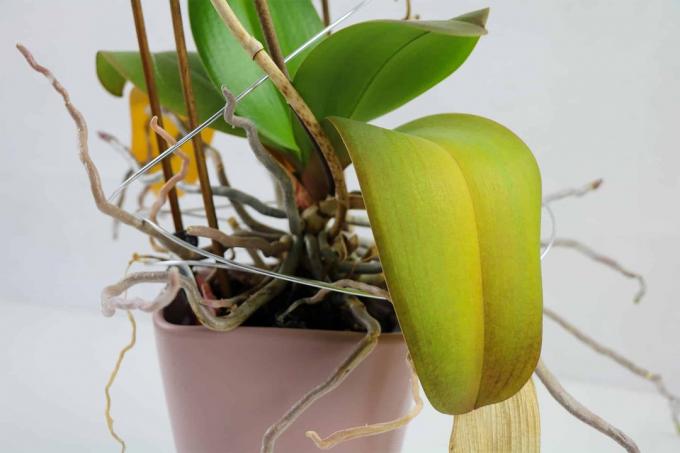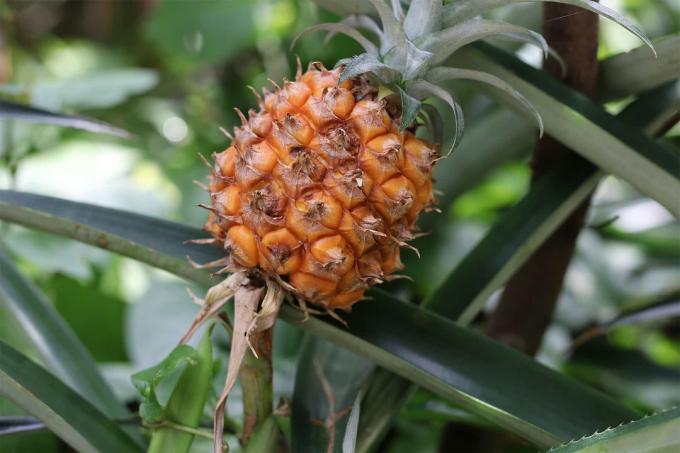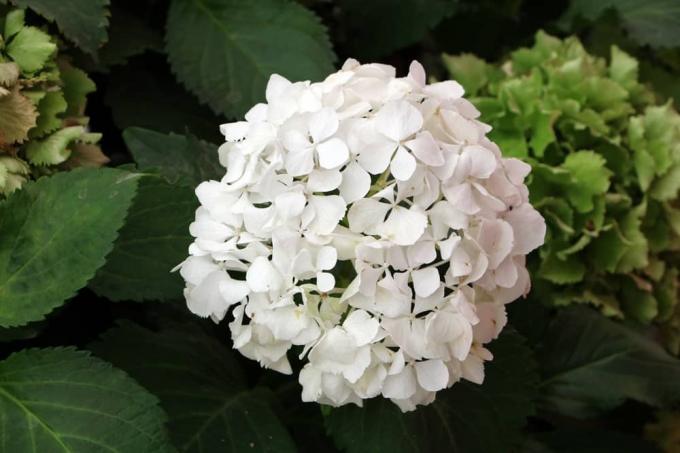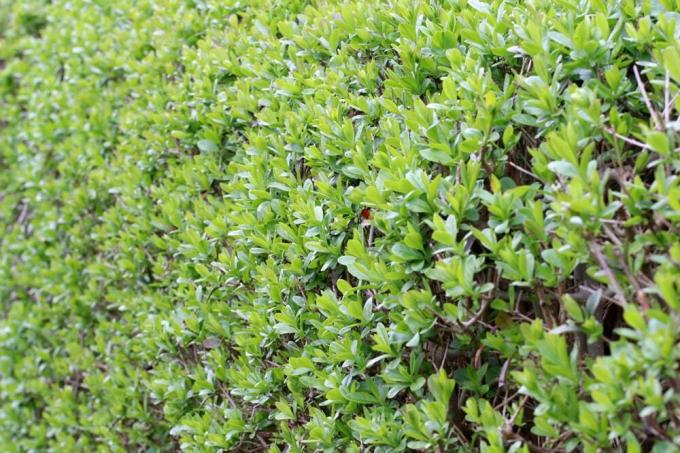

Table of contents
- Plant Pruning Tips
- Spring
- Summer
- Autumn
- winter
- Conclusion
Regular pruning ensures healthy growth over the long term, splendid flowering and can increase the harvest of fruit-bearing plants. However, the right time when pruning is extremely important, otherwise the plant can be damaged or freeze to death next winter due to a weakened immune system. Some plants only need to be freed from faded and dead parts, others need a radical pruning. A key guide to timing and amount of pruning is the flowering time of the particular plant.
Plant Pruning Tips
Many gardeners shy away from pruning because they don't know exactly when and where to make the cut. A pruning is extremely important for most plants in order to grow healthily for a long time, to develop a magnificent flower and not to bare prematurely. In addition, the harvest yields can be increased in fruit-bearing plants with a targeted pruning. Although there are no generally applicable instructions for pruning plants, certain basic rules can be adhered to. If you want to be on the safe side, you should find out in advance about the requirements of the respective plant:
- Regularly cut out faded and dead plant parts
- Thin out excessively branched shoots to prevent harmful fungal infestation
- Cut shrubs regularly into shape, otherwise they will develop shoots that are too long and thin
- In general, early bloomers should be pruned immediately after flowering
- Do not cut late bloomers until next spring
- If in doubt, do not prune the plant, just thin it out
- Even prune strong growing hedges twice a year
- Double pruning promotes denser privacy protection, e.g. B. in flowering shrubs and privet hedges
- The harder the pruning, the more new shoots are formed
- Slightly trim strong shoots, but vigorously trim weak shoots
- Only cut back in warm and dry weather conditions
Tip:
If bleeding occurs during pruning, these should be closed with a wound sealant. Always make sure you use high-quality tools, only sharp and disinfected pruning shears enable a clean cut.
Spring
The plants that bloom in spring bloom on a previous year's shoot, the stronger it is, the richer the bloom. Many flowering ornamental plants need to be pruned in spring because these cuts can no longer close by the end of the growing season. If pruning is done too late in the fall, frost can freely penetrate the plant and even kill it. In spring, during the growing season, plants recover more quickly from pruning. This way, harmful pathogens cannot enter the cuts and infect the plant. A disadvantage, however, are the bare patches, which are often visible throughout the summer months. The following aspects should be considered when pruning plants in spring:
- Generally prune roses only in spring, never in late autumn
- Early spring is the ideal time to prune summer flowering fruit trees
- Always prune fruit trees before they begin to sprout, otherwise they will bleed
- Prune raspberries for the first time in spring
- Cut back shrubs that only bloom in late summer and winter
- Evergreen grasses, e.g. B. Waldmarbel, clean out in spring
- Cut back the ornamental grasses, whose infructescence embellishes the bare garden in winter
- Fruit clusters of ornamental grasses also serve as bird feed and winter protection
- Completely cut back frost damage on small-flowered plants
Tip:
A radical pruning in spring ensures only a few new, but very strong shoots. The smaller the pruning, the more numerous new shoots will form.
Summer

In summer, the pruning of the plants is to be divided up in terms of time and, depending on the plants, carried out either at the beginning of summer, in midsummer or in late summer. Spring-flowering plants should also be trimmed at this time, especially during rainy periods, to prevent fungal attack from the rotting flowers. The summer bloomers carry their flowers on this year's shoots. The summer cut serves more to maintain the shape, radical cuts should not be made during this time of the year. The following procedures have proven themselves when pruning plants in summer:
- Prune flowering shrubs in early summer
- Start pruning red gooseberries and currants in midsummer
- Cut fan trellis and wandering trellis into shape in late summer
- Prune plums and raspberries after summer's harvest
- Trim hedges that serve as privacy screens
- Do not prune sensitive hedges from August, as young new shoots can easily freeze to death
- Cut back spring perennials when the leaves turn yellow, e.g. B. crying heart
- Spring perennials die early for the summer
- In the case of summer perennials, remove the faded inflorescences in good time
- Summer perennials bloom again in autumn, especially delphiniums
- Prune deciduous trees, such as forsythia and lilac, after flowering in early summer
- Prune cherry trees, peaches and apricots in late summer
- To simplify the harvest, cut off the branches intended for thinning, including the fruit
- After the harvest, make a rejuvenation cut and thin out the crown
Tip:
In the case of flowering shrubs, the flowering time can be controlled by pruning, and in some cases the plant can even be made to bloom again.
Autumn
In autumn, the plant pruning should be carried out less radically so that the plant does not have to suffer unnecessarily in the upcoming winter. The leaves, flowers and stalks left standing serve as additional protection against frosty temperatures and prevent outside shoots from freezing. The autumn bloomers, like the summer bloomers, carry their flowers on this year's shoots. Pruning in autumn is particularly recommended in rough and windy altitudes when a lot of snow is expected in winter:
- In autumn, most plants are already in the dormant phase
- Bleeding during cutting is less
- Pruning late fruit bearing plum trees
- Clean out late flowering bed roses
- Shaping blackberries after harvest
- With blackberries, stinging shoots grow from the leaf axils, cut them back
- Cut back deciduous grasses in the fall
Tip:
Pampas grass and other frost-sensitive grasses should not be pruned in autumn; these are better tied together in late autumn.
winter
Most plants must not be pruned in winter, as pruning can cause frostbite and, in extreme cases, even death of the plants. Only a few hardy varieties can handle pruning in the cold season without causing damage. Fruit trees are traditionally pruned in winter, since the farmers' workload was too great during the other seasons and they only had time for it in winter:
- Only prune extremely hardy trees and shrubs
- It is better to avoid pruning during the winter
- Traditionally, fruit trees are pruned in winter
Conclusion
Pruning is crucial for the plant to flourish. If this part of the gardening work is neglected, the growth and development of the flowers will suffer. Many shrubs become lignified and bare over time if they are not pruned regularly. In general, early spring and late fall are the best times of year to prune plants. However, pruning should be less extreme in autumn, but a more radical pruning can be done in spring. The flowering time is a meaningful indicator for determining the right time for plant pruning. Early-flowering plants are pruned immediately after flowering, late-flowering varieties only in the following spring. Deciduous trees and shrubs, which grow too dense and tangled over the years, should generally be thinned out. A targeted pruning of the plant promotes air circulation between the branches and leaves, in this way the fungal infestation is prevented in the long term.
 garden editorial
garden editorial I write about everything that interests me in my garden.
Learn more about caring for plants

Plant hangs leaves despite water
If plants let their leaves hang despite water, this can have various causes. In order to prevent it from dying off by taking rapid countermeasures, you should find out about the possible causes and effective countermeasures here.

Plants hang their heads: what to do?
If the ornamental plants are cultivated in the garden or in pots and suddenly let their heads droop, then the question quickly arises as to why this can be. However, this is usually due to maintenance errors that need to be checked. If a remedy is found, most plants usually recover quickly.

Repot orchids: how & when to replant
Thanks to more uncomplicated and easy-care new breeds, orchids are now at home on many windowsills. In particular, the Phalaenopsis or butterfly orchid, which is available in countless varieties, is very popular. Read how and when you can best repot the distinctive beauties.

pull tree out of core | 7 tips for growing a tree yourself
Trees can be grown from cores without much effort. There are a variety of plants that have seeds and can be easily cultivated in your own garden. Special classic fruit trees should be mentioned, which are suitable for such a project.

How do hydrangeas stay white? | That way it won't turn pink
How do hydrangeas stay white - this is the question many hobby gardeners ask themselves when the hydrangea changes color. The white often turns into a pink, which is usually comparatively pale or can appear "dirty". Here we reveal how it works.

Cutting privet: when is the best time?
Privet is becoming increasingly popular and is often used as a privacy screen in the form of a privet hedge. This is not surprising, because the plant is easy to care for and fast-growing. However, it is crucial to cut the plant regularly at the right time.



